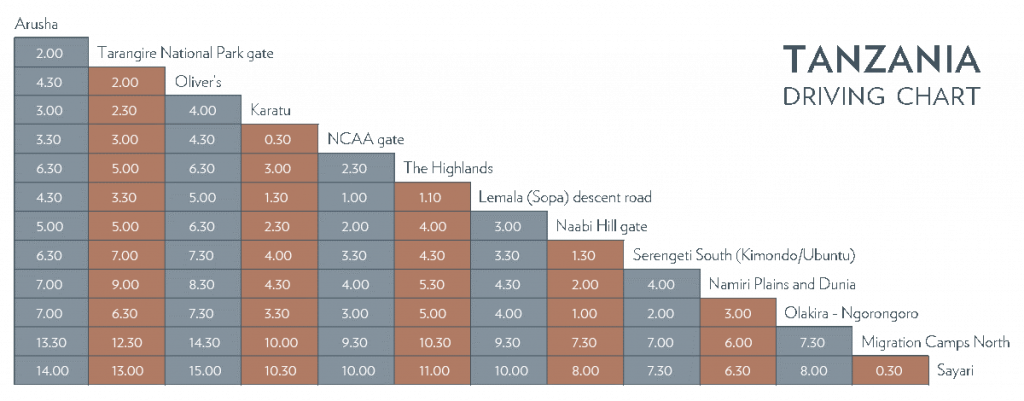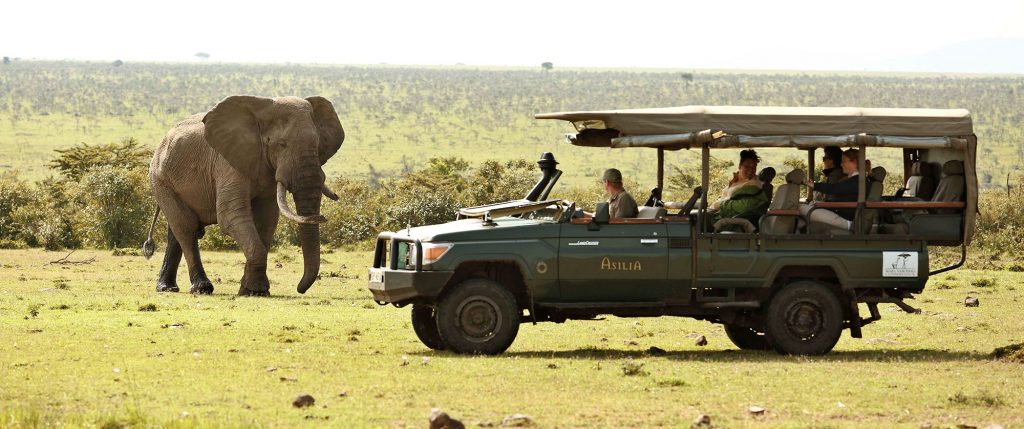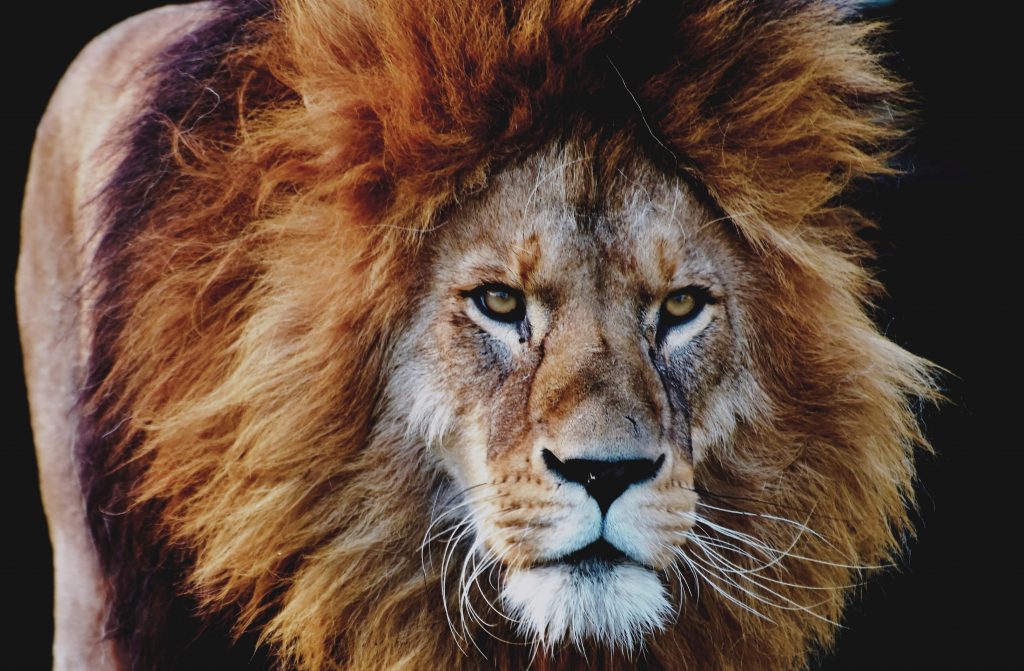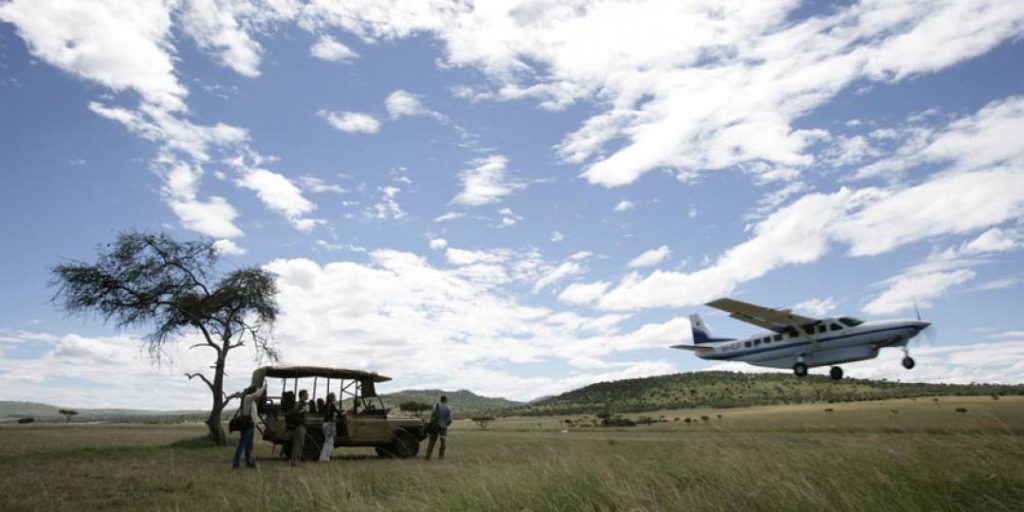A visit to Africa is not complete without going on safari. When designing a safari to Kenya or Tanzania, it is important to know the difference between fly-in and drive-in options.
Seeing Africa’s Big 5 is one of the many highlights of going on a safari and everyone should be ticking off the lion, leopard, buffalo, elephant and rhino from their bucket list.
Kenya and Tanzania are considered the icons of the classic African safari, famous for open savannas and vast unending plains, and of course, home to the Big 5
When we design your safari, it is important to know that the travel distances between locations are often very far apart from each other, therefore it is important to decide on how you move around the region.
In this blog, we take a look at one of the most important questions:
What is the difference between a fly-in and drive-in safari?
Fly-in Safaris
Simply means being flown to each destination by light aircraft. There are several small airstrips within each national park or conservancy that service different camps and lodges in that area. Often a flight will stop at many airstrips en- route in order to take guests to where they need to be. Guests will be warmly welcomed by their ranger, and do a short mini-safari transfer to the lodge.
This is the most convenient option, allowing you to have breakfast in one destination, and lunch in the next.
Drive-in Safaris
Many of the best wildlife areas in Kenya and Tanzania happen to be relatively close to each other, making it possible to drive from one reserve to another in just a few hours.
Driving allows guests to see and experience more of the country, while offering time to develop a deeper connection with their guide, often resulting in a more tailored safari. If your clients choose to travel overland, they will arrive at each destination with their own private vehicle and guide.
THINGS TO CONSIDER WHEN DECIDING BETWEEN A FLYING OR DRIVING SAFARI:
Where are you going and which areas do you want to combine?
If you want to combine several areas that are near each other, then it often makes sense to drive.
For example: Arusha, Lake Manyara, Tarangire and the Ngorongoro Crater are all relatively close to one another, so it is easy to drive between them. However, if you want to visit the northern Serengeti, Ruaha or Nyerere then you will need to fly as the distances are too great to drive.
Here with an example of the estimated driving times in Tanzania:

Is there a cost difference between the two options?
This will depend on the number of people traveling. The cost of the vehicle and guide is the same for one person as it is for seven people. Therefore, the more people you have in the car, the better value for money it becomes.
Conversely, for smaller groups of one to three people it is usually more cost effective to fly, even if the distances that need to be traveled are relatively short.
How many days do you have on safari?
If time is limited, then it is often best to fly to maximize time on safari. On the other hand, if you have a couple of weeks to spend on safari, then you may choose to go at a slower pace by driving, making stops along the way and seeing more of the country outside the parks.
How much luggage can you bring?
Light aircrafts have a maximum baggage allowance of 15kgs (33lbs) per person – including hand luggage. Solid hard suitcases are also not permitted as bags need to be soft sided (I.e. Duffel bag) to fit into the aircraft hold.
With your own vehicle you do not have the same strict luggage limitations, of course depending on how many people are traveling with you.
Are you scared of flying?
There is no escaping the fact that you are going to have to take a plane to get to certain remote locations, however some people are more comfortable on large international aircrafts than smaller light aircrafts.
The small aircrafts used in East Africa usually seat between 6 to 12 passengers. Their size means that the slightest movement or bump can be felt, and the pilot and cockpit can easily be seen. All this, coupled with the remote — and often bumpy — bush airstrips can be enough to dissuade someone with a fear of flying, so it’s worth to mention this. For most of us though, the experience of flying in a tiny plane is exhilarating and can really add to the overall experience.

Open- vs close-sided vehicles – what’s your preference?
If you choose a drive-in safari, all the game viewing will be done from a closed vehicle; the same one they have use to move between locations.
If you choose a fly-in safari, it is likely your game viewing will be done from an open vehicle based at their accommodation (the exception is the Ngorongoro Conservation Area where all vehicles must be closed). The safari experience does differ slightly between open- and close-sided vehicles and is therefore worth explaining this to clients before they decide between fly-in safari and drive-in safari.
| Open Vehicle | Closed Vehicle |
| Completely open on all sides with a canvas roof to protect from the sun. Can be chilly in the early morning or evening so blankets are provided. | Closed-sided with manual windows and a pop-up roof allowing for driving outside of parks and a more comfortable drive during the wetter months and cooler parts of the day. |
| Guests feel very close to wildlife and views are not obstructed while sitting down. It can also make guests feel a little exposed. | Views can be obstructed but the pop-up roof affords panoramic views and better animal spotting while standing. |
| The guide leading the game drive will be based at camp so will know the surrounding area and animals exceptionally well. | There is sometimes a greater choice of places to stay because clients are arriving with their own guide and vehicle, so they are not reliant on the lodge to provide guides, activities and transfers. |
| Unless they have paid an additional cost to hire a private vehicle, using an open-sided vehicle will mean shared game drives. This makes drives a sociable experience, but also means compromises may need to be made to keep everyone happy. | Driving into camp means your clients have their own vehicle and guide, allowing them complete flexibility with their activities and timings. Guests will keep the same guide for the duration of their trip allowing them to build a rapport and understanding of guest needs. |
**Please note there are exceptions to the above, especially regarding in-camp vehicles. Some operators will only offer closed vehicles in camp.

Consider a combination
As with many aspects for a safari, it’s worth mixing it up and experiencing a combination of flying and driving so you experience the best of both.
For example, in northern Tanzania, a great compromise is to drive between Arusha, Tarangire, Lake Manyara and the Ngorongoro Crater with a private guide and vehicle, before flying into the Serengeti to continue their safari.
This is essential if you are traveling to the northern Serengeti because it is too far to drive from the Crater in a single day. One can also drive one way and then fly back to save time, but please bear in mind that it’s not always the most cost-effective option because there is the cost of an ‘empty leg’, as the driver and vehicle will still need to return to Arusha, even if the guests don’t join them. If this sounds confusing, don’t worry, our experienced team of consultants are always on hand to advise you about logistics.
No matter what option your clients choose, Africa never disappoints! As John Hemingway said, “If I have even seen magic, it has been Africa!”
Content collaboration: Asilia Lodges



